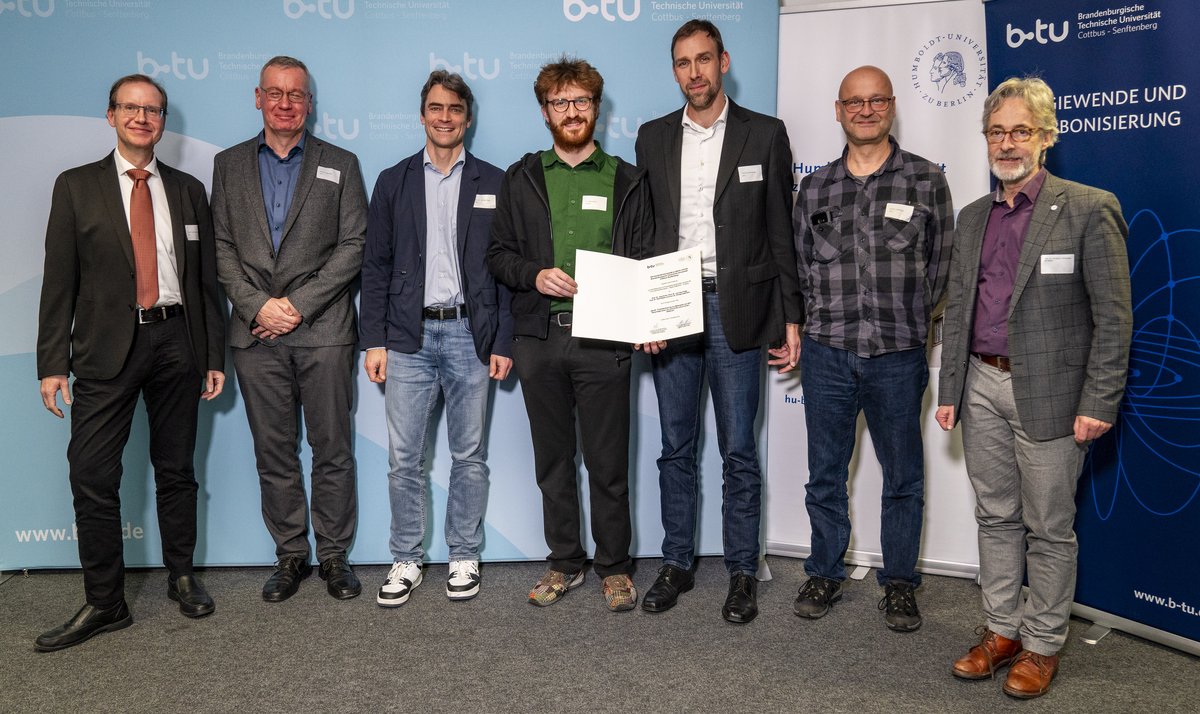Innovation corridor Berlin - Cottbus: BTU Cottbus-Senftenberg and HU Berlin intensify cooperation
The innovation and sustainability corridor from Berlin via Adlershof to Cottbus creates a wide range of opportunities for forward-looking developments for science and industry at the participating locations. The Brandenburg University of Technology Cottbus-Senftenberg (BTU) and Humboldt-Universität zu Berlin (HU) have developed joint ideas and solutions to strengthen the innovation potential of the Berlin-Brandenburg metropolitan region and tackle scientific challenges together. The two institutions have now signed a Memorandum of Understanding, which provides for closer cooperation in the areas of research, teaching and transfer.
"I am delighted about the cooperation with the HU, which will serve to work on both existing and future scientific topics. I am convinced that this will result in joint project proposals, for example to the German Research Foundation DFG," emphasises Prof. Dr Michael Hübner, Vice President for Research and Transfer at BTU Cottbus-Senftenberg. The cooperation also contributes to strengthening the Berlin-Brandenburg innovation corridor through the sustainable science-based further development of the region. "The intensive exchange of ideas and expertise aims to create further synergies and to initiate and implement innovations beyond the university context. This will further strengthen Berlin-Brandenburg as a centre of science," says Hübner.
In an initial workshop in November 2022, the main focus was on identifying common topics and formats in the field of research as well as opportunities for cross-state partnerships. The second workshop to identify the potential for cooperation along the innovation corridor took place at BTU Cottbus-Senftenberg on 27 November 2024. The aim was to present new and established research topics and formats in order to further strengthen scientific exchange between the two universities. To this end, a call for proposals for joint research projects was published in April 2024. Eleven BTU-HU teams applied for funding of 16,000 euros each and presented their project proposals. Four of them were selected and chosen by BTU Vice President Hübner and Christoph Schneider, Vice President for Research at HU Berlin.
Christoph Schneider says: "The Berlin-Berlin-Adlershof-Cottbus innovation corridor is picking up speed at university level. We were very impressed by the many exciting project ideas that use mathematical, scientific, social and cultural science methods to contribute to answering important questions of our time. I am delighted that we have the opportunity to support four of the teams of HU and BTU scientists in the further development of their projects into third-party-funded research projects."
One of the award-winning projects is "ReLIB". In this project, researchers from HU Berlin and BTU Cottbus-Senftenberg want to work on the characterisation of materials from the recycling process of end-of-life batteries. Together with BASF as an industrial partner, four work phases will investigate the extent to which energy-storing material can be extracted from old lithium-ion batteries, processed and reused in new batteries.
Another project team is working on the further development of system models for energy supply and storage. To this end, the scientists want to analyse the current expertise in the field of multi-energy systems using special mathematical modelling methods, identify gaps in knowledge and close them.
The acoustic dimension of Lusatia is to be researched in the funded project "Lusatian Rhythms". Within the research process, soundscapes of the region are to be recorded and analysed. The researchers also want to investigate the extent to which participatively generated forms of expression can help to reflect and shape the current transformation in Lusatia.
A project to develop sustainable two-component adhesives is also being funded. The scientists involved want to research how lignin 2-component adhesives can be produced from exclusively bio-based ingredients and how they behave in application. One of the application scenarios being discussed is that the adhesives could be used to attach temperature-resistant corals in damaged reefs.
Press contacts:
BTU Cottbus-Senftenberg
Ilka Seer
Tel.: 0355 / 69 3612
E-mail: ilka.seer(at)b-tu.de
HU Berlin
Christiane Rosenbach
Phone: 030 / 20 93 12710
E-mail: christiane.rosenbach@hu-berlin.de






